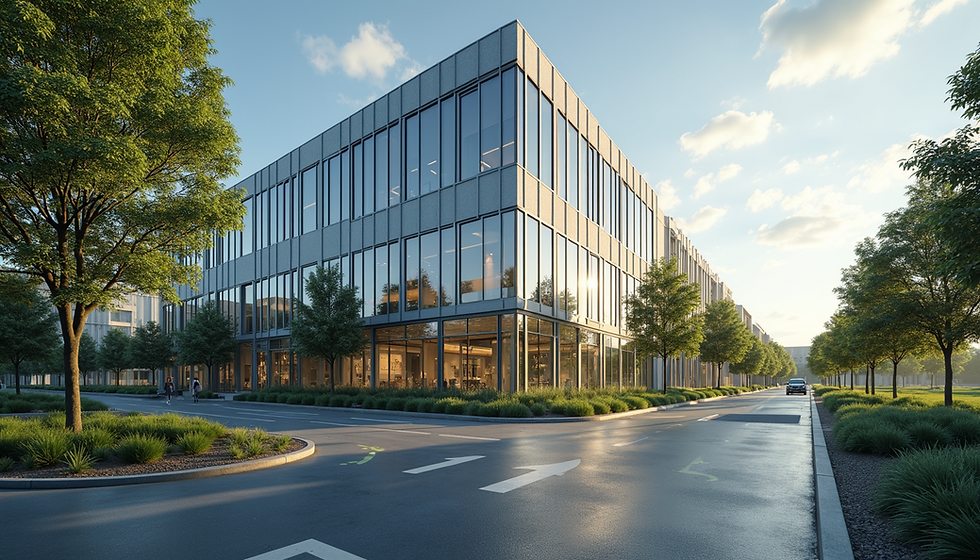Interaction of Design, Engineering Technology, and AI: Enhancing Innovation in Fit-Outs
- Aug 4, 2025
- 4 min read
In the rapidly evolving fields of design and engineering, technology and artificial intelligence (AI) are transforming how we create spaces and objects. This integration enhances innovation, efficiency, and creativity, particularly in design and fit-outs. As we explore this fascinating synergy, it becomes clear that AI is not just an adjunct tool but a vital partner in the design process.
The Role of Technology in Modern Design
The infusion of technology into design practices has revolutionized the industry. Software like Computer-Aided Design (CAD) allows designers to create detailed and precise models. However, the innovation doesn’t stop there. The latest technology extends beyond traditional design methods, incorporating AI to assist in decision-making and experimentation.
For instance, Autodesk's AI-powered tools can suggest design modifications based on user preferences, historical data, and even ergonomic studies. This shift toward technology-driven design not only accelerates the creative process but also opens new avenues for imaginative solutions.

How AI Enhances Efficiency in Engineering
AI has brought substantial improvements to efficiency in engineering practices. The ability of AI algorithms to analyze vast amounts of data at high speed leads to smarter decision-making. For example, in construction engineering, AI can predict project timelines and costs based on historical data, identifying potential delays and suggesting adjustments almost in real-time.
Additionally, AI systems can automate mundane tasks such as scheduling, budgeting, and client communication. This allows engineers to focus on more strategic and creative aspects of their work, thereby enhancing productivity. A McKinsey report highlights that such AI adoption can lead to productivity improvements of up to 40%.

Design Meets Functionality through AI Integration
The integration of AI in design does not merely serve to streamline processes—it fundamentally transforms the design landscape. Designers can create vibrant spaces that are not only aesthetically pleasing but also functional. AI-driven design software uses algorithms to optimize layouts for natural light, airflow, and even sound quality.
Consider the case of smart office designs. By leveraging AI, designers can analyze how employees use space and adjust layouts to boost collaboration and well-being. This adaptability enhances both productivity and employee satisfaction, making workplaces more harmonious and efficient.
One compelling example is the use of AI in determining optimal furniture arrangements based on how people interact in a space. By analyzing patterns in data from previous designs, AI can suggest layouts that improve workflow and comfort.

Challenges in the Integration of AI in Design and Engineering
While embracing AI offers clear benefits, challenges remain at the intersection of design, engineering, and technology. One significant challenge is the learning curve associated with new tools and technologies. Many professionals may feel overwhelmed by the rapid pace of change, leading to resistance to adopting AI solutions.
Furthermore, the reliance on AI in design may lead to concerns about creativity. Many in the industry wonder whether designs generated by algorithms can match the inspiration and intuition of a human designer. Thus, finding a balance between technology and human creativity is crucial.
To address these challenges, continuous training and education are essential. Organizations must foster a culture of exploration and innovation. They should encourage professionals to experiment with new tools, understanding that AI is a complement to human creativity rather than a replacement.
Future Prospects of AI in Design and Fit-Outs
The future of design and engineering technology coupled with AI is undeniably exciting. As machine learning algorithms become more sophisticated, the possibilities for innovation expand. We can anticipate an increase in AI-driven smart environments, where design is tailored continually to the needs of its users.
Moreover, the integration of virtual and augmented reality with AI will enable designers and clients to visualize spaces before execution. This immersive experience will facilitate better decision-making and reduce errors during fit-outs, ultimately saving costs and time.
As organizations look to harness the power of AI, they must prioritize ethical considerations. Protecting user data and ensuring that AI enhances rather than constrains creativity will be paramount.
Embracing the Future of Design and Engineering
In conclusion, the interaction between design, engineering technology, and AI presents a profound opportunity for innovation. By embracing these advancements, professionals in the field can create more efficient, functional, and beautiful environments. As we navigate this new frontier, it is essential to integrate technology with human creativity to push the boundaries of what is possible in design and fit-outs.
Incorporating AI into the design process has proven to enhance creativity and innovation. Organizations willing to invest time and resources into understanding and applying these technologies are likely to lead the industry forward into a new era of design excellence.
By viewing AI as a tool for enhancing human creativity, we can foster environments that are not only efficient but also rich in artistry and innovation. As we advance, staying adaptable and open to change will define the successful intersection of design, engineering, and technology.
Through this exploration, we see that AI is not merely a technological advancement; it is a means to rethink our approach to design and engineering. For those ready to embrace these cutting-edge technologies, the landscape of design and fit-outs is ripe with potential, boundless creativity, and unexplored opportunities.







Comments